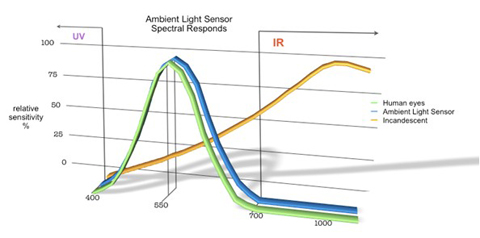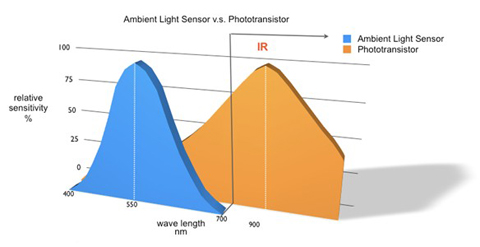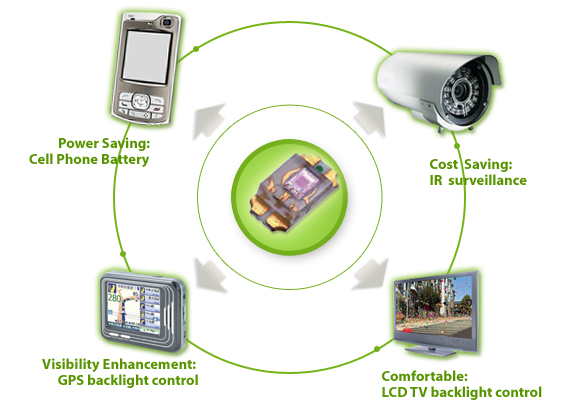What Is Ambient Light Sensor (ALS)?
 |
- ALS is a visible light sensor component.
- ALS spectrum reaction curve is similar to human eyes'.
- ALS current intensity changes linearly by direct ratio with ambient light.
- ALS output photocurrent changes by Lux no matter what kinds of light source.
|
Why We Need Ambient Light Sensor?
- Traditional CdS can't be used anymore because of RoHS directive, Apparently, CdS is composed by Cadmium (Cd) and Sulfur (S), so CdS is not permitted by RoHs anymore since Dec 31, 2009. As ambient light sensor is one kind of IC package components which is able to pass SGS inspection and RoHS criteria.
- Portable devices, such as Cell Phone. ALS improves operation time and manages power consumption of panel and keypad.
- More comfortable, such as LCD TV. When ALS detects the ambient light is getting dark, the backlight will be dimming for a more confortable operation environment.
- More convenient, such as GPS (car navigation). The backlight of GPS will be adjusted automatically to avoid dizzy when drive in the night.

Figure 1. Spectral Responses of Human eyes, ALS, Incandescent
- From above figure 1, The spectral responds of visible light is from 380nm to 780nm.
- Below 380nm is ultraviolet rays (UV) spectral response, and up 780nm is infrared red rays (IR) spectral responses.
- Incandescent light spectral responds is from 400nm to 2000nm which means the spectral response contains lots of IR.
- To filter / to cut off IR is essential to Ambient Light Sensor specification to meet human eyes.

Figure 2. Ambient light sensor v.s. Phototransistor
- The spectral responds of Ambient Light Sensor is from 400nm to 700nm.
- The spectral responds of Phototransistor is from 400nm to 1200nm.
- Phototransistor is interfered by infrared red rays (IR) easily.
- At the same ambient light(Lux), Phototransistor has a higher output photocurrent than Ambient Light Sensor because of IR.



